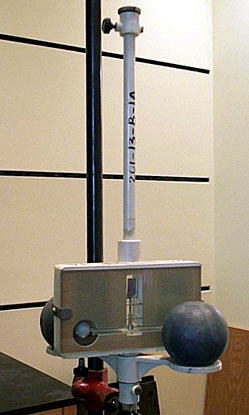
| Mechanics > Gravitation | DCS# 1L10.30 |

| Cavendish
apparatus |
202-17-D |
| laser pointer with adjustable
lens |
101-06-D2 |
| stopwatch |
101-05-D4 |
| post-it notes |
111 |
| tape measure |
101-05-E2 |